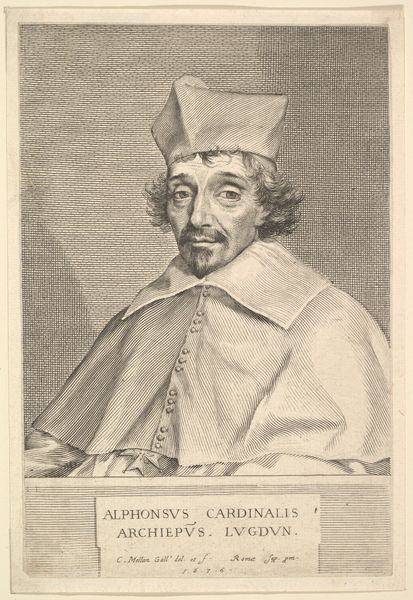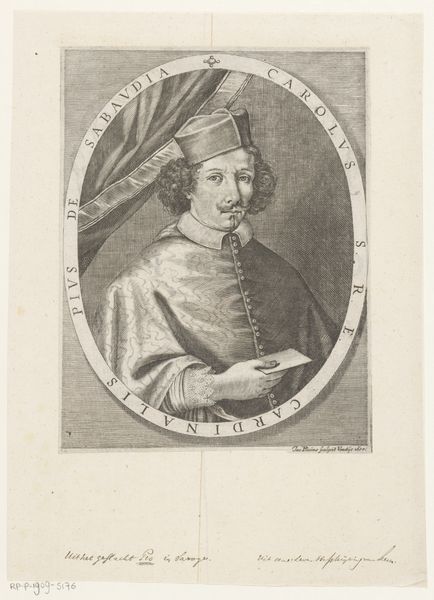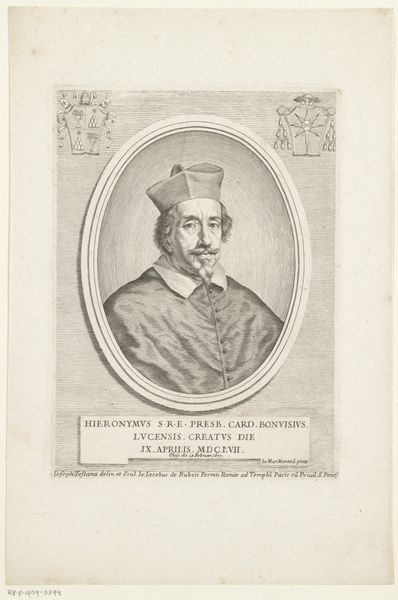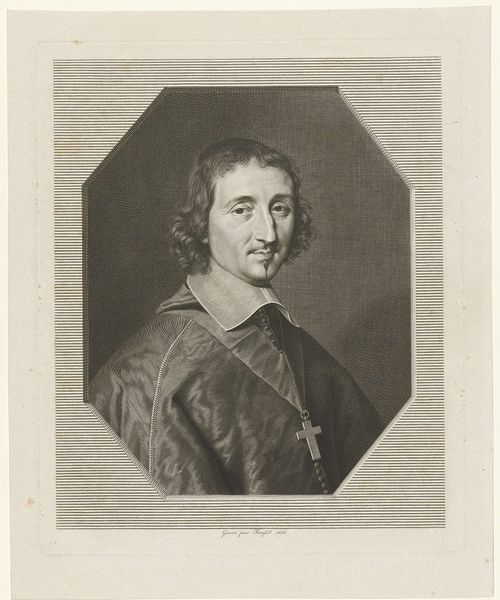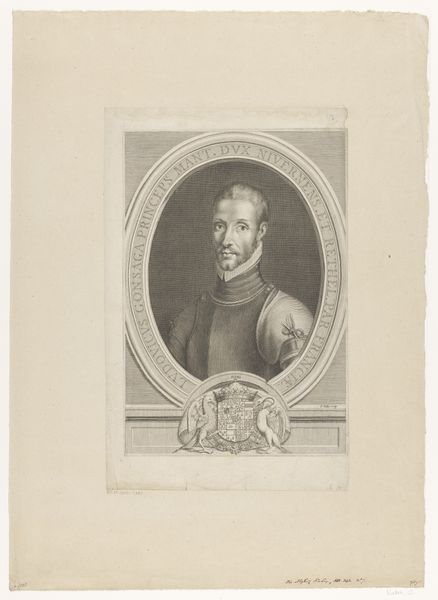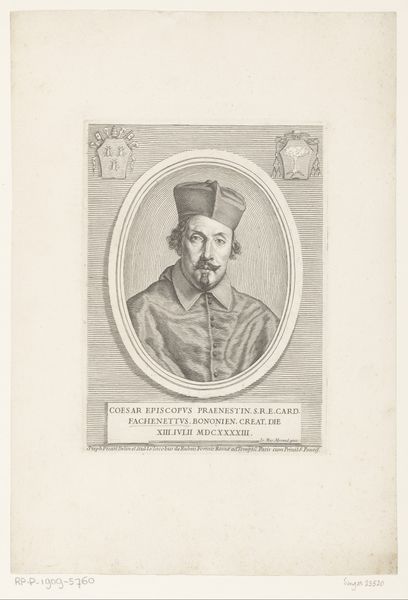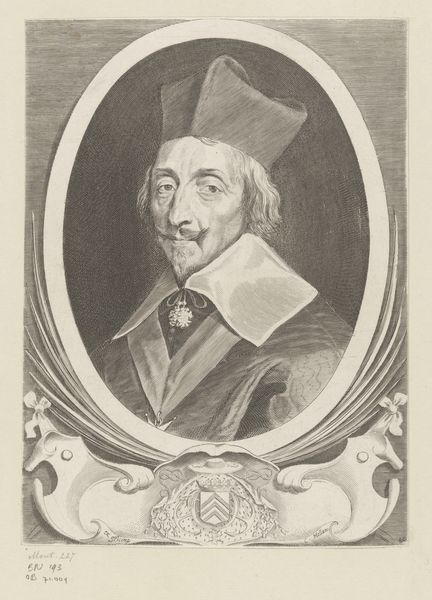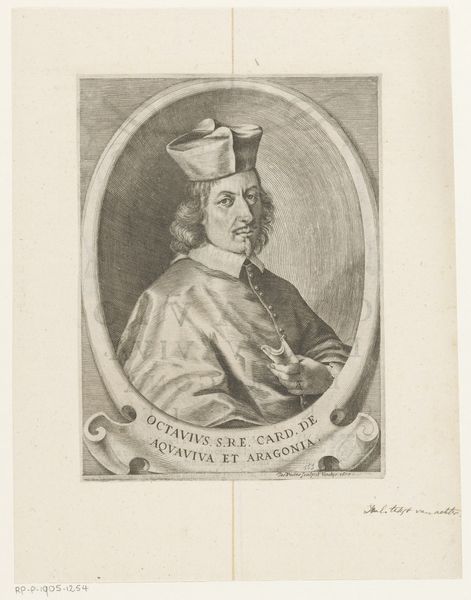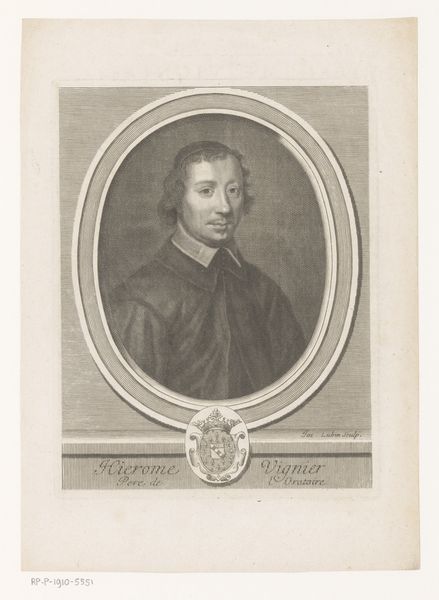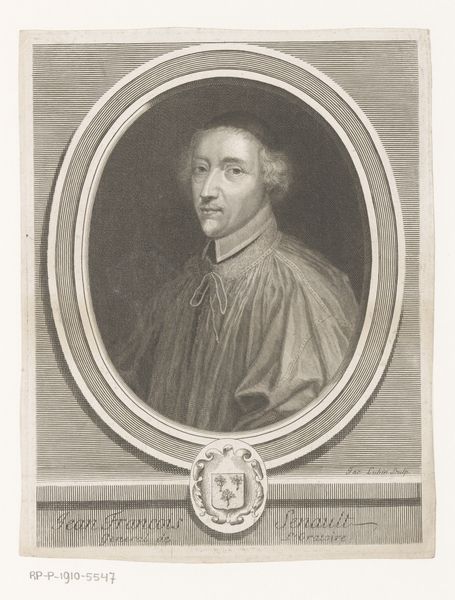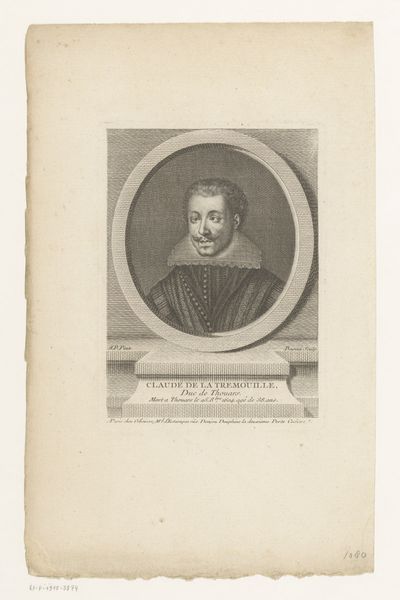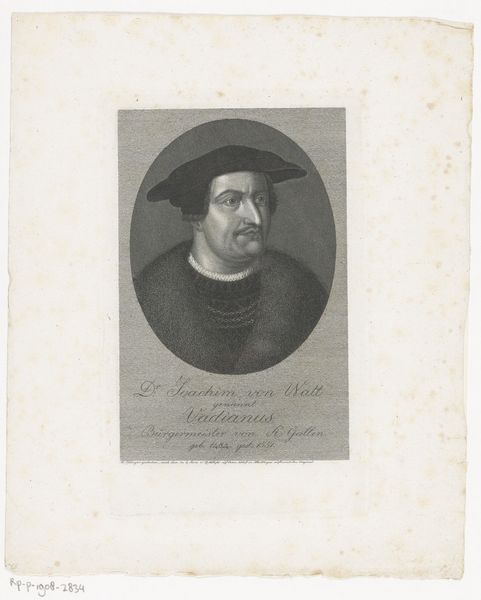
Portret van Alphonse Louis du Plessis de Richelieu, aartsbisschop van Lyon 1636
0:00
0:00
claudemellan
Rijksmuseum
print, engraving
#
portrait
#
baroque
# print
#
old engraving style
#
pencil drawing
#
yellow element
#
history-painting
#
engraving
Dimensions: height 232 mm, width 161 mm
Copyright: Rijks Museum: Open Domain
Editor: Here we have Claude Mellan’s 1636 engraving, "Portret van Alphonse Louis du Plessis de Richelieu, aartsbisschop van Lyon," at the Rijksmuseum. It has an understated and ethereal quality with those fine, almost delicate lines. How do you interpret the imagery in this portrait? Curator: The Richelieu family crest, though subtly rendered, whispers of power dynamics and religious authority in 17th century France. Consider the symbols of his office – his garments and hat – each element works to construct not just an image of a man, but an embodiment of his societal role. Mellan masterfully uses linear hatching to portray not only his likeness, but also the weighty expectation imposed by lineage and the Church. Editor: So the seemingly simple portrait conveys a complex message? Curator: Indeed. Notice how his gaze meets ours directly? It’s not merely a recording of a face, but an engagement. His eyes, though rendered with the same linear technique as the rest of the print, hold a certain intensity, perhaps suggesting the burdens of leadership, and inviting you to contemplate on this man's character beyond his title. What does that expression communicate to you? Editor: I see now. It is less about documenting and more about symbolic communication. The engraving becomes a cultural artifact reflecting historical memory and power structures. Thanks for that illuminating reading! Curator: My pleasure. It’s rewarding to uncover the layers of meaning embedded within seemingly straightforward imagery. It reminds us that art can be a potent vessel for understanding our shared cultural past.
Comments
No comments
Be the first to comment and join the conversation on the ultimate creative platform.
